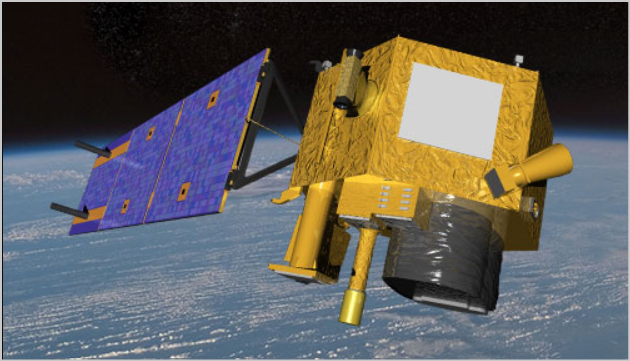For millennia, mankind has looked up at the night sky and been filled with a sense of wonder and curiosity. That same curiosity still burns brightly today. With the advancements of modern technology, humanity has been able to use artificial intelligence to explore the universe in ways never before imagined.
From robotics and satellite operations to data analysis, predictive maintenance, and galaxy mapping, artificial intelligence (AI) is helping us understand the mysteries of our universe and even explore it.
In this article, we’ll take a closer look at seven incredible ways AI is being used in space exploration and what the future could look like.
Is AI Common in Space Exploration?
Yes! AI is currently being used in the space industry to help scientists analyze data more quickly and accurately and automate operations on spacecraft. The continuous development of AI is helping rovers and landers explore other planets and moons in ways never before possible. And all these combined contribute to new discoveries, making AI an invaluable tool that can help us learn more about the world beyond our own.
7 Ways AI Is Used in Space Exploration

In the modern space exploration era, artificial intelligence (AI) has become an essential tool in the search for knowledge. Scientists use AI and ML models to automate spacecraft operations, analyze large quantities of data, and can even save lives. Let’s break down what that looks like:
Robotics
AI plays an increasingly important role in space exploration, with its ability to autonomously navigate around obstacles leading the way. But this is not something recent. Rovers like the Mars Exploration Rover and Curiosity have been doing fully-autonomous navigation drives on the surface of Mars for over ten years.
The rover’s sensors can detect environmental hazards, such as rocks, craters, and other features. Then, its AI analyzes the data to determine the best path forward. This ensures the rover can safely pass by without any risk of collision.
AEGIS, a computer vision-based detection system, similarly runs onboard the Perseverance rover and finds interesting rocks to sample. This is a huge advancement as it paths the way to completely autonomous space exploration rovers.
Satellite Operations
AI is revolutionizing how satellites are operated, providing more efficient, smarter, and faster solutions for managing satellite operations.
SpaceX uses AI-driven algorithms to help its navigation satellites avoid collisions with others in orbit. The algorithms use a combination of data from the satellite’s sensors, including its position and velocity, to identify potentially hazardous maneuvers and take evasive action. The satellite’s onboard computer then takes control and adjusts the satellite’s speed and direction to avoid an imminent collision.
AI can also optimize the process of maneuvering satellites into their correct orbits, reducing the fuel required and the period needed to achieve the desired orbital position.
Data Analysis
AI can help with data analysis in space exploration by providing more accurate and efficient methods of analyzing data from space missions. Machine learning algorithms can assist in identifying patterns in data from satellites, probes, and other space exploration tools to detect anomalies that could signal potential discoveries or risks.
AI can also help identify data trends and provide more detailed insights through predictive analytics and forecasting than traditional data analysis methods.
Planetary Geology (Astrogeology)
Using AI, scientists can now detect and classify geological features on planets and moons, such as craters, volcanoes, and other surface features. This technology can also be used to generate detailed 3D models of planetary surfaces, which can help scientists better understand a planet or moon’s environment and history.
Rocket Landing
SpaceX has been improving and refining how rockets operate. They use AI to monitor and analyze data from the rocket’s sensors and telemetry systems, allowing for better decision-making and more precise control of the rocket’s trajectory and speed. SpaceX also uses AI to automate certain aspects of the rocket landing procedure, such as controlling the engines and landing gear and making sure the rocket is in the optimal position to land.
Star and Galaxy Mapping
Astronomers can now map the universe in unprecedented detail thanks to AI-based algorithms that can detect, classify, and recognize patterns in star and galaxy data. These algorithms allow astronomers to accurately identify stars and galaxies in space and even understand their physical properties (like mass and age). And, by leveraging AI to predict the behavior of stars and galaxies over time, scientists can get invaluable insights that can be used for future mapping and exploration endeavors.
Predictive Maintenance
We’ve seen that AI analyzes large quantities of data to help with satellite operations and rocket landing procedures. Still, it can also use the same data to identify potential areas where preventive maintenance should be conducted.
Machine learning models can predict future failures or performance issues and recommend action plans to reduce the risks. This can drastically reduce maintenance costs and help save countless lives.
Get To Know Other Data Science Students
George Mendoza
Lead Solutions Manager at Hypergiant
Rane Najera-Wynne
Data Steward/data Analyst at BRIDGE
Melanie Hanna
Data Scientist at Farmer's Fridge
AI in Space Exploration: The Past, Present, and Future
In recent years, AI has become an integral part of space exploration. It has been used to uncover phenomena that humans could not easily detect, such as changes in orbital paths or objects that are too small to be seen with the naked eye.
A little while ago, AI was mainly used to analyze data gathered by satellites and other instruments, such as Hubble Space Telescope images. AI algorithms were also used to search for patterns and insights in this data so that researchers could better understand the universe around us.
Today, AI is used for various space exploration applications ranging from autonomous navigation systems on spacecraft to virtual simulations for training astronauts. NASA’s Jet Propulsion Laboratory has recently developed an AI-based mission planning system that can autonomously plan a spacecraft mission based on given parameters and constraints. And machine learning algorithms are being used to analyze millions of images gathered from Mars rovers to identify potential water sources or mineral deposits on the planet’s surface.
Looking ahead into the future of space exploration, AI will increasingly be implemented across various future missions in space—from asteroid mining and Mars colonization initiatives to interplanetary travel and beyond.
Past
Here’s what the history of AI in space exploration looks like:
Deep Space 1

Deep Space 1 (DS1) was a NASA technology demonstration spacecraft launched in 1998. Its primary mission was to test 12 advanced, high-risk technologies, including autonomous navigation. The mission was extended twice and concluded in 2001.
Deep Space 1 made history when its flight experiment was controlled by Remote Agent, a feat that had only been seen in science fiction up to that point. That artificial intelligence exceeded all expectations. It could detect, diagnose and fix any problems encountered during the mission. This proved that the software could make decisions to keep the mission running smoothly.
Earth Observing-1

Earth Observing-1 (EO-1) is a satellite imaging mission developed by NASA and the U.S. Geological Survey (USGS). Launched in November 2000, EO-1 was designed to demonstrate new Earth observation technologies and provide an advanced capability for monitoring land surface dynamics.
The mission utilized an innovative spacecraft design integrated with three high-resolution sensors to create new opportunities for observing the Earth’s environment. The data collected from these sensors is used to study various topics, including ecological processes, natural hazards, land use change, urban planning, and global climate change.
EO-1 was equipped with a revolutionary software program called Autonomous Science Agent. It allowed EO-1 to autonomously detect and respond to events occurring on the planet. This package consists of systems for science data analysis, deliberative planning, and run-time robust execution.
Present
Here’s where AI in space exploration stands today:
James Webb Space Telescope and Morpheus

The James Webb Space Telescope (JWST or Webb) is a space telescope that was launched in 2021. It is much larger than its predecessor (the Hubble Space Telescope) and has a 21 feet (6.5 meters) primary mirror, making it the largest outer space telescope ever built.
NASA’s scientists rely on AI to analyze the vast amount of data being generated by Webb with the help of Morpheus, a machine learning model. Morpheus will detect and classify galaxies in deep space, helping map the earliest structures in the universe. The AI has been trained on Nvidia GPUs and previously used to help organize images for the Hubble Space Telescope.
Crew Interactive Mobile Companion (CIMON and CIMON-2)

Crew Interactive Mobile Companion (CIMON) is a robotic AI-based assistant created by Airbus, IBM, and the German space agency (DLR) for use in the International Space Station. CIMON is a free-floating spherical device about the size of a medicinal ball that contains voice recognition, facial recognition, object recognition, and natural language processing capabilities. It can help astronauts with tasks like assembling equipment or providing instructions.
AI-Powered Rover “Pragyan” for India’s Second Moon Mission – Chandrayaan-2

Pragyan is an AI-powered rover that is part of Chandrayaan-2, India’s second moon mission. It will explore the lunar surface and search for water, minerals, and other resources.
The rover has been designed to traverse the lunar surface and perform various scientific experiments. An AI system enables it to navigate autonomously and identify, analyze, and respond to its environment in real-time, much like the 19-year older system tested in the Earth Observing-1 mission.
Kepler Data

Kepler was a space telescope designed to search for Earth-sized planets in the habitable zone of their host stars. Through nine years of data collection, Kepler has made over 2,600 discoveries, including the first validated Earth-size planet in the habitable zone outside our solar system.
The data collected by Kepler will continue to be analyzed by the team of researchers to discover more planets and further guide astrobiology science. And as machine learning techniques become more powerful, we expect scientists to discover even more exoplanets in the near future, all based on existing data.
Future
Artificial Intelligence is opening new possibilities and will soon revolutionize the way we think of space expiration. NASA’s Parker Solar Probe mission is scheduled to arrive at the Sun’s outer atmosphere in December 2024.
The probe will be within 4 million miles of the Sun’s surface and can tolerate temperatures as high as 2500℉ (or 1370℃). It is equipped with a magnetometer and an imaging spectrometer that will help us understand how the Sun interacts with other planets in our solar system, thus allowing us to comprehend solar storms, which often interfere with communication technology on earth.
AI is expected to improve our ability to monitor Earth-orbiting observation satellites and spacecraft on long-distance voyages. By combining AI with robotics, we might see astro robots that can explore distant planets and moons by themselves.
FAQs About AI in Space Exploration
We answer your most frequently asked questions:
Does NASA Use AI?
Yes! NASA uses AI in many operations, from analyzing space missions and spacecraft data to monitoring spacecraft’s health, controlling robotic arms and rovers on other planets, and more.
What Are the Disadvantages of Using AI in Space Exploration?
AI can significantly help space exploration, but it does so at a cost, mainly because it’s rather expensive. Moreover, AI is still limited in its capabilities and may not be able to provide the same level of insight as humans do.
How Is Machine Learning Used in Space Exploration?
Machine learning algorithms are used to analyze data gathered from space-based instruments, such as telescopes and satellites, optimize their efficiency, and discover patterns and anomalies.
Companies are no longer just collecting data. They’re seeking to use it to outpace competitors, especially with the rise of AI and advanced analytics techniques. Between organizations and these techniques are the data scientists – the experts who crunch numbers and translate them into actionable strategies. The future, it seems, belongs to those who can decipher the story hidden within the data, making the role of data scientists more important than ever.
In this article, we’ll look at 13 careers in data science, analyzing the roles and responsibilities and how to land that specific job in the best way. Whether you’re more drawn out to the creative side or interested in the strategy planning part of data architecture, there’s a niche for you.
Is Data Science A Good Career?
Yes. Besides being a field that comes with competitive salaries, the demand for data scientists continues to increase as they have an enormous impact on their organizations. It’s an interdisciplinary field that keeps the work varied and interesting.
10 Data Science Careers To Consider
Whether you want to change careers or land your first job in the field, here are 13 of the most lucrative data science careers to consider.
Data Scientist
Data scientists represent the foundation of the data science department. At the core of their role is the ability to analyze and interpret complex digital data, such as usage statistics, sales figures, logistics, or market research – all depending on the field they operate in.
They combine their computer science, statistics, and mathematics expertise to process and model data, then interpret the outcomes to create actionable plans for companies.
General Requirements
A data scientist’s career starts with a solid mathematical foundation, whether it’s interpreting the results of an A/B test or optimizing a marketing campaign. Data scientists should have programming expertise (primarily in Python and R) and strong data manipulation skills.
Although a university degree is not always required beyond their on-the-job experience, data scientists need a bunch of data science courses and certifications that demonstrate their expertise and willingness to learn.
Average Salary
The average salary of a data scientist in the US is $156,363 per year.
Data Analyst
A data analyst explores the nitty-gritty of data to uncover patterns, trends, and insights that are not always immediately apparent. They collect, process, and perform statistical analysis on large datasets and translate numbers and data to inform business decisions.
A typical day in their life can involve using tools like Excel or SQL and more advanced reporting tools like Power BI or Tableau to create dashboards and reports or visualize data for stakeholders. With that in mind, they have a unique skill set that allows them to act as a bridge between an organization’s technical and business sides.
General Requirements
To become a data analyst, you should have basic programming skills and proficiency in several data analysis tools. A lot of data analysts turn to specialized courses or data science bootcamps to acquire these skills.
For example, Coursera offers courses like Google’s Data Analytics Professional Certificate or IBM’s Data Analyst Professional Certificate, which are well-regarded in the industry. A bachelor’s degree in fields like computer science, statistics, or economics is standard, but many data analysts also come from diverse backgrounds like business, finance, or even social sciences.
Average Salary
The average base salary of a data analyst is $76,892 per year.
Business Analyst
Business analysts often have an essential role in an organization, driving change and improvement. That’s because their main role is to understand business challenges and needs and translate them into solutions through data analysis, process improvement, or resource allocation.
A typical day as a business analyst involves conducting market analysis, assessing business processes, or developing strategies to address areas of improvement. They use a variety of tools and methodologies, like SWOT analysis, to evaluate business models and their integration with technology.
General Requirements
Business analysts often have related degrees, such as BAs in Business Administration, Computer Science, or IT. Some roles might require or favor a master’s degree, especially in more complex industries or corporate environments.
Employers also value a business analyst’s knowledge of project management principles like Agile or Scrum and the ability to think critically and make well-informed decisions.
Average Salary
A business analyst can earn an average of $84,435 per year.
Database Administrator
The role of a database administrator is multifaceted. Their responsibilities include managing an organization’s database servers and application tools.
A DBA manages, backs up, and secures the data, making sure the database is available to all the necessary users and is performing correctly. They are also responsible for setting up user accounts and regulating access to the database. DBAs need to stay updated with the latest trends in database management and seek ways to improve database performance and capacity. As such, they collaborate closely with IT and database programmers.
General Requirements
Becoming a database administrator typically requires a solid educational foundation, such as a BA degree in data science-related fields. Nonetheless, it’s not all about the degree because real-world skills matter a lot. Aspiring database administrators should learn database languages, with SQL being the key player. They should also get their hands dirty with popular database systems like Oracle and Microsoft SQL Server.
Average Salary
Database administrators earn an average salary of $77,391 annually.
Data Engineer
Successful data engineers construct and maintain the infrastructure that allows the data to flow seamlessly. Besides understanding data ecosystems on the day-to-day, they build and oversee the pipelines that gather data from various sources so as to make data more accessible for those who need to analyze it (e.g., data analysts).
General Requirements
Data engineering is a role that demands not just technical expertise in tools like SQL, Python, and Hadoop but also a creative problem-solving approach to tackle the complex challenges of managing massive amounts of data efficiently.
Usually, employers look for credentials like university degrees or advanced data science courses and bootcamps.
Average Salary
Data engineers earn a whooping average salary of $125,180 per year.
Database Architect
A database architect’s main responsibility involves designing the entire blueprint of a data management system, much like an architect who sketches the plan for a building. They lay down the groundwork for an efficient and scalable data infrastructure.
Their day-to-day work is a fascinating mix of big-picture thinking and intricate detail management. They decide how to store, consume, integrate, and manage data by different business systems.
General Requirements
If you’re aiming to excel as a database architect but don’t necessarily want to pursue a degree, you could start honing your technical skills. Become proficient in database systems like MySQL or Oracle, and learn data modeling tools like ERwin. Don’t forget programming languages – SQL, Python, or Java.
If you want to take it one step further, pursue a credential like the Certified Data Management Professional (CDMP) or the Data Science Bootcamp by Springboard.
Average Salary
Data architecture is a very lucrative career. A database architect can earn an average of $165,383 per year.
Machine Learning Engineer
A machine learning engineer experiments with various machine learning models and algorithms, fine-tuning them for specific tasks like image recognition, natural language processing, or predictive analytics. Machine learning engineers also collaborate closely with data scientists and analysts to understand the requirements and limitations of data and translate these insights into solutions.
General Requirements
As a rule of thumb, machine learning engineers must be proficient in programming languages like Python or Java, and be familiar with machine learning frameworks like TensorFlow or PyTorch. To successfully pursue this career, you can either choose to undergo a degree or enroll in courses and follow a self-study approach.
Average Salary
Depending heavily on the company’s size, machine learning engineers can earn between $125K and $187K per year, one of the highest-paying AI careers.
Quantitative Analyst
Qualitative analysts are essential for financial institutions, where they apply mathematical and statistical methods to analyze financial markets and assess risks. They are the brains behind complex models that predict market trends, evaluate investment strategies, and assist in making informed financial decisions.
They often deal with derivatives pricing, algorithmic trading, and risk management strategies, requiring a deep understanding of both finance and mathematics.
General Requirements
This data science role demands strong analytical skills, proficiency in mathematics and statistics, and a good grasp of financial theory. It always helps if you come from a finance-related background.
Average Salary
A quantitative analyst earns an average of $173,307 per year.
Data Mining Specialist
A data mining specialist uses their statistics and machine learning expertise to reveal patterns and insights that can solve problems. They swift through huge amounts of data, applying algorithms and data mining techniques to identify correlations and anomalies. In addition to these, data mining specialists are also essential for organizations to predict future trends and behaviors.
General Requirements
If you want to land a career in data mining, you should possess a degree or have a solid background in computer science, statistics, or a related field.
Average Salary
Data mining specialists earn $109,023 per year.
Data Visualisation Engineer
Data visualisation engineers specialize in transforming data into visually appealing graphical representations, much like a data storyteller. A big part of their day involves working with data analysts and business teams to understand the data’s context.
General Requirements
Data visualization engineers need a strong foundation in data analysis and be proficient in programming languages often used in data visualization, such as JavaScript, Python, or R. A valuable addition to their already-existing experience is a bit of expertise in design principles to allow them to create visualizations.
Average Salary
The average annual pay of a data visualization engineer is $103,031.
Resources To Find Data Science Jobs
The key to finding a good data science job is knowing where to look without procrastinating. To make sure you leverage the right platforms, read on.
Job Boards
When hunting for data science jobs, both niche job boards and general ones can be treasure troves of opportunity.
Niche boards are created specifically for data science and related fields, offering listings that cut through the noise of broader job markets. Meanwhile, general job boards can have hidden gems and opportunities.
Online Communities
Spend time on platforms like Slack, Discord, GitHub, or IndieHackers, as they are a space to share knowledge, collaborate on projects, and find job openings posted by community members.
Network And LinkedIn
Don’t forget about socials like LinkedIn or Twitter. The LinkedIn Jobs section, in particular, is a useful resource, offering a wide range of opportunities and the ability to directly reach out to hiring managers or apply for positions. Just make sure not to apply through the “Easy Apply” options, as you’ll be competing with thousands of applicants who bring nothing unique to the table.
FAQs about Data Science Careers
We answer your most frequently asked questions.
Do I Need A Degree For Data Science?
A degree is not a set-in-stone requirement to become a data scientist. It’s true many data scientists hold a BA’s or MA’s degree, but these just provide foundational knowledge. It’s up to you to pursue further education through courses or bootcamps or work on projects that enhance your expertise. What matters most is your ability to demonstrate proficiency in data science concepts and tools.
Does Data Science Need Coding?
Yes. Coding is essential for data manipulation and analysis, especially knowledge of programming languages like Python and R.
Is Data Science A Lot Of Math?
It depends on the career you want to pursue. Data science involves quite a lot of math, particularly in areas like statistics, probability, and linear algebra.
What Skills Do You Need To Land an Entry-Level Data Science Position?
To land an entry-level job in data science, you should be proficient in several areas. As mentioned above, knowledge of programming languages is essential, and you should also have a good understanding of statistical analysis and machine learning. Soft skills are equally valuable, so make sure you’re acing problem-solving, critical thinking, and effective communication.
Since you’re here…Are you interested in this career track? Investigate with our free guide to what a data professional actually does. When you’re ready to build a CV that will make hiring managers melt, join our Data Science Bootcamp which will help you land a job or your tuition back!






